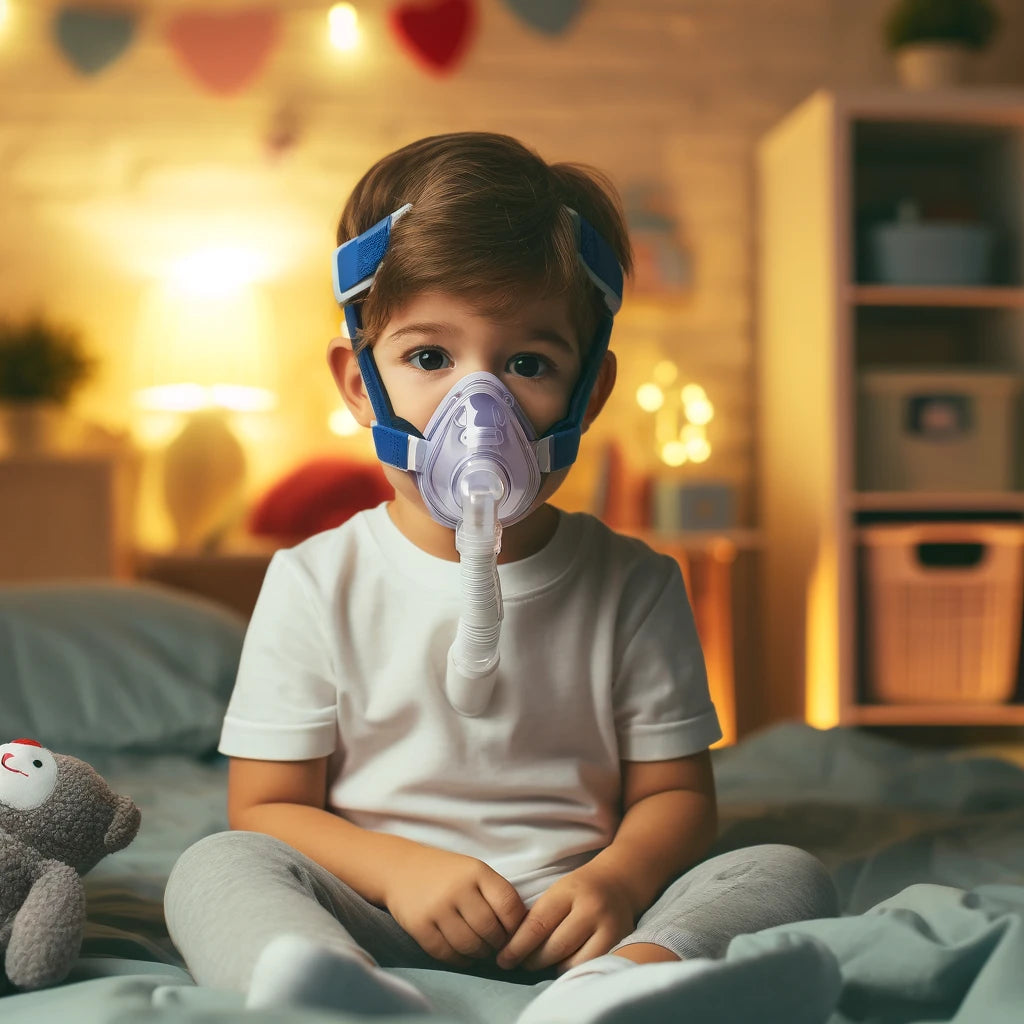Sleep apnea is often thought of as a condition that primarily affects adults, but children can also suffer from this serious sleep disorder. When left untreated, sleep apnea in children can lead to various health and developmental issues. In this blog post, we will explore the impact of sleep apnea on children and how ApneaLink, a simple and effective diagnostic tool, helps in the diagnosis and treatment of this condition.
Understanding Sleep Apnea in Children
Sleep apnea in children is characterized by repeated interruptions in breathing during sleep, similar to adult sleep apnea. These interruptions can be caused by the partial or complete blockage of the airway. The two main types of sleep apnea seen in children are:
- Obstructive Sleep Apnea (OSA): The most common type, OSA occurs when the muscles in the throat relax excessively, blocking the airway.
- Central Sleep Apnea (CSA): Less common in children, CSA occurs when the brain fails to send the proper signals to the muscles that control breathing.
Signs and Symptoms of Sleep Apnea in Children
Identifying sleep apnea in children can be challenging, as the symptoms may be subtle or attributed to other conditions. Common signs and symptoms include:
- Loud snoring
- Pauses in breathing during sleep
- Restless sleep or frequent awakenings
- Daytime sleepiness or fatigue
- Behavioral issues, such as irritability or hyperactivity
- Difficulty concentrating or poor academic performance
- Mouth breathing or dry mouth in the morning
- Night sweats
The Impact of Untreated Sleep Apnea on Children
Untreated sleep apnea can have serious consequences for children, affecting their physical health, cognitive development, and overall well-being. Potential impacts include:
- Growth and Development: Sleep apnea can disrupt the release of growth hormones, potentially leading to growth delays.
- Cognitive and Behavioral Issues: Poor sleep quality can impair cognitive function, leading to difficulties in learning, memory, and attention. Behavioral issues such as hyperactivity and aggression may also arise.
- Cardiovascular Health: Children with untreated sleep apnea are at an increased risk of developing high blood pressure and other cardiovascular problems.
- Metabolic Health: The condition can contribute to insulin resistance and an increased risk of type 2 diabetes.
Diagnosing Sleep Apnea with ApneaLink
Early diagnosis and treatment of sleep apnea in children are crucial for preventing these negative outcomes. ApneaLink is a portable, user-friendly device that helps diagnose sleep apnea by monitoring breathing patterns, oxygen levels, and heart rate during sleep. Here's how ApneaLink works:
- Simple Setup: ApneaLink is easy to set up and use at home, making it a convenient option for parents and children.
- Comprehensive Data Collection: The device collects comprehensive data on breathing patterns, oxygen saturation, and heart rate, providing a detailed overview of the child's sleep health.
- Accurate Results: ApneaLink delivers accurate and reliable results, helping healthcare professionals diagnose sleep apnea and determine its severity.
- Non-Invasive: The device is non-invasive and comfortable for children to wear during sleep, ensuring minimal disruption to their rest.
Treatment Options for Sleep Apnea in Children
Once diagnosed, several treatment options are available for children with sleep apnea, depending on the severity and underlying cause of the condition. These may include:
- Positive Airway Pressure (PAP) Therapy: PAP devices, such as CPAP machines, deliver a continuous flow of air to keep the airway open during sleep.
- Oral Appliances: Dental devices can help keep the airway open by repositioning the jaw or tongue.
- Tonsillectomy and Adenoidectomy: Surgical removal of the tonsils and adenoids may be recommended if these tissues are causing airway obstruction.
- Lifestyle Changes: Encouraging healthy sleep habits, weight management, and avoiding allergens can help reduce sleep apnea symptoms.
Conclusion
Sleep apnea in children is a serious condition that requires prompt diagnosis and treatment to prevent long-term health and developmental issues. ApneaLink provides a simple and effective solution for diagnosing sleep apnea, allowing for early intervention and appropriate treatment. If you suspect your child may have sleep apnea, consult a healthcare professional and consider using ApneaLink to ensure your child receives the care they need for a healthier, more restful sleep.

